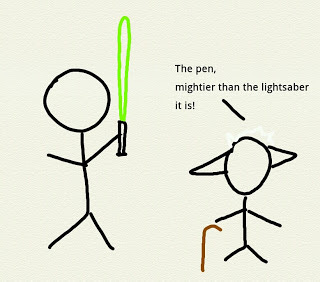Return Of The (Long) Copy Writer?

My love affair with long copy began in 2002, during my internship with Ambience D'Arcy. My then boss, Raghu Bhat, suggested I focus on learning how to craft copy. So during my next internship, I pestered my Creative Director, Elvis Sequeira, to teach me how to write, and never looked back.
All through my mainline stint, long copy was my - pun intended - long suit. I set myself a goal - every year, I would present at least one long copy campaign to a client. In a period when everyone wanted to crack a TV commercial, I became the long copy guy. A lot of work remained unpublished as clients showed ever-decreasing belief in print and long copy. But there were some memorable releases, and I fed off those.
Copywriting became a bit frustrating about three years ago. There wasn't much appreciation for the carefully crafted paragraph, or for print as a medium itself. Most long-copy ads were written as scam entries for Goafest, hung on the walls for an audience comprising twelve jury members and a few hundred festival delegates. Worst of all, it became impossible to find young talent that could actually put together a grammatically correct sentence in the Queen's English. Fewer still possessed the ability to vary their tone and vocabulary to suit different brands, the way David Abbott taught us.
And so long-copy advertising in India seemed destined to fade into oblivion.
Until the digital explosion came along.
Portals like Yahoo have long known what digital marketing professionals are just beginning to cotton on to - content, if interesting, relevant and well targeted, will be consumed, no matter the length or format. Long-form content, mostly text, keeps websites alive and audiences engaged. Millions of text-heavy blogs are consumed each day, read through from cover to cover. While video views are increasing rapidly in India - YouTube is the second most-widely searched site in India - bandwidth considerations mean that text is still the primary form of content online.
The other aspect of this is the explosion of social media. Brand engagement on Facebook and Twitter is growing exponentially. Each day, users' timelines are populated by a plethora of content from brands, be it long form or short.
Here's the rub. What I'm seeing right now is an explosion of social media content, but an appalling paucity of good writing. I see strings of cliches masquerading as headlines, reams of soulless copy packaged and labelled as blog posts. Take the line, "Winter fashion just got hotter!" How many times have you read this line, in print or online? Replace 'winter fashion' and 'hotter' with 'travel' and 'easier', and you have yet another bad headline. Look at brand blogs next, and you will see generic news coverage instead of engaging brand content.
Social media and branded content demand a mix of advertising and journalistic writing skills. The best-written Twitter account I've seen for a brand in India is the one for Hippo. It's run by the copywriters at Creativeland Asia, and brings a distinctive brand voice to popular news and culture.
The other problem with journalism in India is that ideas have become stale and worn, giving way to sensationalism and battles to coin a superlative. Every sale is India's biggest sale; every party is India's most happening party. What happened to the idea of positioning each piece of content to make it distinctive, impactful and memorable? What happened to the need for command over the English language? (If you'd watched the TV coverage of the Indian F1 Grand Pricks, you'd know what I mean.)
I believe that there are skills each discipline can learn from the other. But I also believe very strongly that if we can get the hardcore journalists among the social media fraternity to understand nuances of brands a lot better, we'll be in a happier place. After all, those nuances are what distinguish a Red Bull page on Formula 1 from ESPN F1.
It's going to take a whole lot of effort to train journalists to think differently when writing for brands. But at the end, my aim is that in my company, we blur the lines between the Content Writers and the Advertising Writers.
And then, perhaps, our people will truly deserve to be called copywriters.



